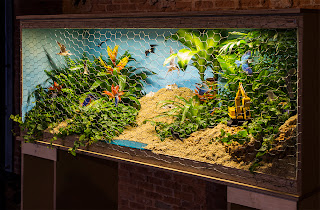







 (Flag design together with Gianluca Tesauro)
www.seethisway.com
http://www.seethisway.com/seethisway/Nauru.html
(Flag design together with Gianluca Tesauro)
www.seethisway.com
http://www.seethisway.com/seethisway/Nauru.html
Mediocria Firma








 (Flag design together with Gianluca Tesauro)
www.seethisway.com
http://www.seethisway.com/seethisway/Nauru.html
(Flag design together with Gianluca Tesauro)
www.seethisway.com
http://www.seethisway.com/seethisway/Nauru.html

Imagine living your first forty years in the twentyone square kilometers of Nauru only to live the next twenty years travelling through the remaining countries of the world. That is what happens to Kinza Kun,the main character in 'The Nauruan' by Swedish author Peter Hansen. Is the world big enough for this Kinza Kun, Elvis Presley, the Pope, a Nepalese goddess and a mysterious man dressed only in white clothes? What happens if you collide with the Wailing Wall? Why should you not eat croissants in Turkey? And how on earth could Kinza float like a butterfly up from a car in Burundi? The Nauruan, a book still looking for a publisher or a sponsor, naturally includes frequent episodes from Nauru. When exploring the world Kinza recalls his homeland and keeps in contact with a friend back home. One day the friend no longer answers the phone…
"En svart noddy seglade högt över havet. Stillahavsön under dess vingar hade tilldelats sina rikedomar av havet och himlen. Avfall som levererats från fåglar, skurar och vågstänk hade förvandlats till fosfat. Det hade utvunnits, exporterats och använts för att få andra länder att gro. I samma veva underminerade Nauru sig självt och riskerade att sjunka i det stigande havets kaos. Samma kaos som hade skapat ön var på väg att förgöra den. Kokosnötter kunde fortfarande exporteras i viss skala men var blott provisoriska livbojar. Kinza Kun kisade i solen. På marken intill honom stod en vattentät ryggsäck. I den fanns kläder, hygienartiklar, en svart bok och en världsatlas som varit en fyrtioårspresent tre veckor tidigare. Inpackade i atlasen låg hans första pass och ett par visumhandlingar. Fem meter framför honom stod en skylt som varnade för att lösspringande kreatur som befann sig på flygremsan vid fel tidpunkt skulle skjutas. Kinza visste att hans lilla ö inte var hela världen. Tiden var kommen att se sig om. Han såg upp på den himmel mot vilken han snart skulle lyfta."
"A black noddy sailed far above the ocean. The Pacific island under its wings had been awarded its wealth by the ocean and the sky. Litter delivered from birds, showers and waves had transformed itself to phosphate. It had been mined, exported and used to make other countries flourish. Meanwhile Nauru undermined itself and increased the risk of going under in the rising chaos of the ocean. The chaos that once created the island was about to destroy it. Coconuts could still be exported at a certain amount but they were merely temporary lifebuoys. Kinza Kun peered in the sunshine. Next to him was a waterproof rucksack. It contained clothes, a toiletry bag, a black book and an atlas that had been a gift for Kinza´s fortieth birthday three weeks earlier. Inside the atlas was Kinza´s first passport and a couple of visa documents. Five meters ahead of him there was a sign telling loose cattle that they would be shot if running around on the airstrip at a bad time. Kinza knew that his little island was not the whole of the world. The time had come to explore. He looked up at the sky towards which he was about to lift."
The author´s email: ph78@mail.com
